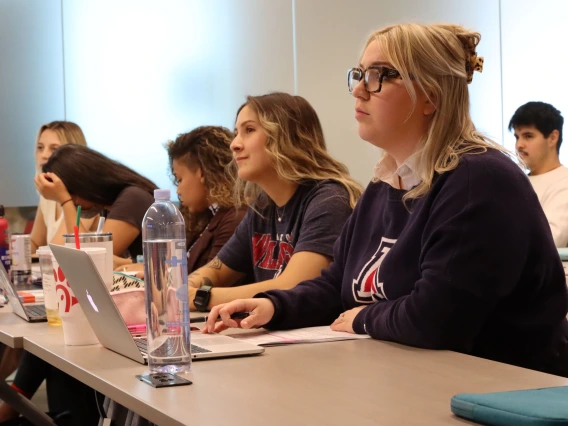Everything you need to enter the education profession as enthusiastic, effective teachers.
The University of Arizona offers many certification programs through various colleges and also offers coursework toward several endorsements.
Undergraduate
Graduate
Here are all of the undergraduate programs offered at the University of Arizona that include the Secondary grade ranges 6-12:
For students who want to teach other subject areas, they will typically major in that subject area and minor in education, or major in our Leadership & Learning Innovation major and minor in their subject area, then complete one of our graduate level secondary education programs:
- 1-year Teach Arizona master's degree (traditional coursework plus student teaching)
- 2-year Alternative HCAT master's degree (alternative path taking coursework while being the paid teacher of record)
All students are required to have a valid Arizona IVP fingerprint clearance card for professional admission and fieldwork. The card takes several weeks to obtain and is valid for six years, so you are encouraged to pursue this as soon as possible.
(Elementary and Early Childhood students only) Support with finding placements for pre-program observation hours will be provided by the Office of Field Experiences during specific times of the academic year. For more information, visit the Office of Field Experiences.
Before You Student Teach:
- Application for Early Childhood Student Teaching
- Application for Elementary Student Teaching
- Application for Special Education - Mild-Moderate Disabilities Student Teaching
While You Student Teach:
- Insurance Coverage for Student Teaching
- Policies for Elementary Student Teaching
- Policies for Early Childhood Student Teaching
- Early Childhood Program Guidebook
- Elementary Program Guidebook
- Pathways Program Guidebook
- FERPA Mandatory Reporting Highlights
- Responsibility Schedule
Student Teaching Assessment:
- Early Childhood Student Teaching Assessment Form (Birth- Pre-K - ECE Students)
- Early Childhood Student Teaching Assessment Form (K-3 – ECE Students)
- Elementary Student Teaching Assessment (K-8 - Elementary)
- Early Childhood Student Teaching Assessment Rubric (K-3 ECE Students)
- Elementary Teacher Candidate Assessment Guide (K-8 Elementary Students)
To become certified to teach in Arizona, prospective teachers must take the appropriate exams as outlined by the Arizona Department of Education Certificate Requirements.
To learn more about the exams and to register to take these exams, please go to the NES website. Learn more about the Arizona Classroom Teacher Spanish Proficiency Exam (Examen de Habilidad en Español Pédagógico) for the Bilingual endorsement.
Additional testing information.
To learn what exams you need to take to transfer your Arizona certification to other states, you will need to contact each state's Department of Education or Teacher Credentialing Office for more information.











